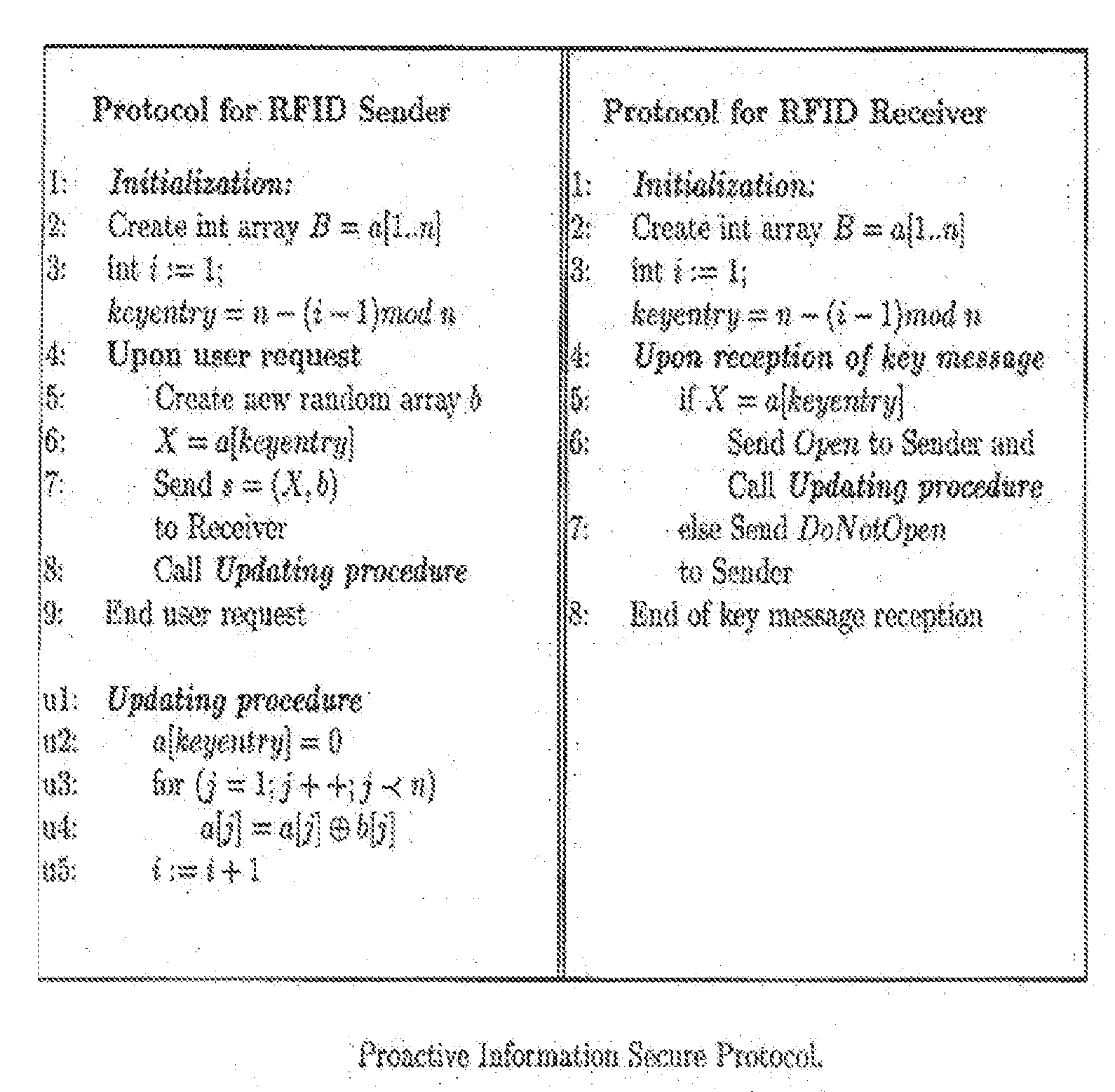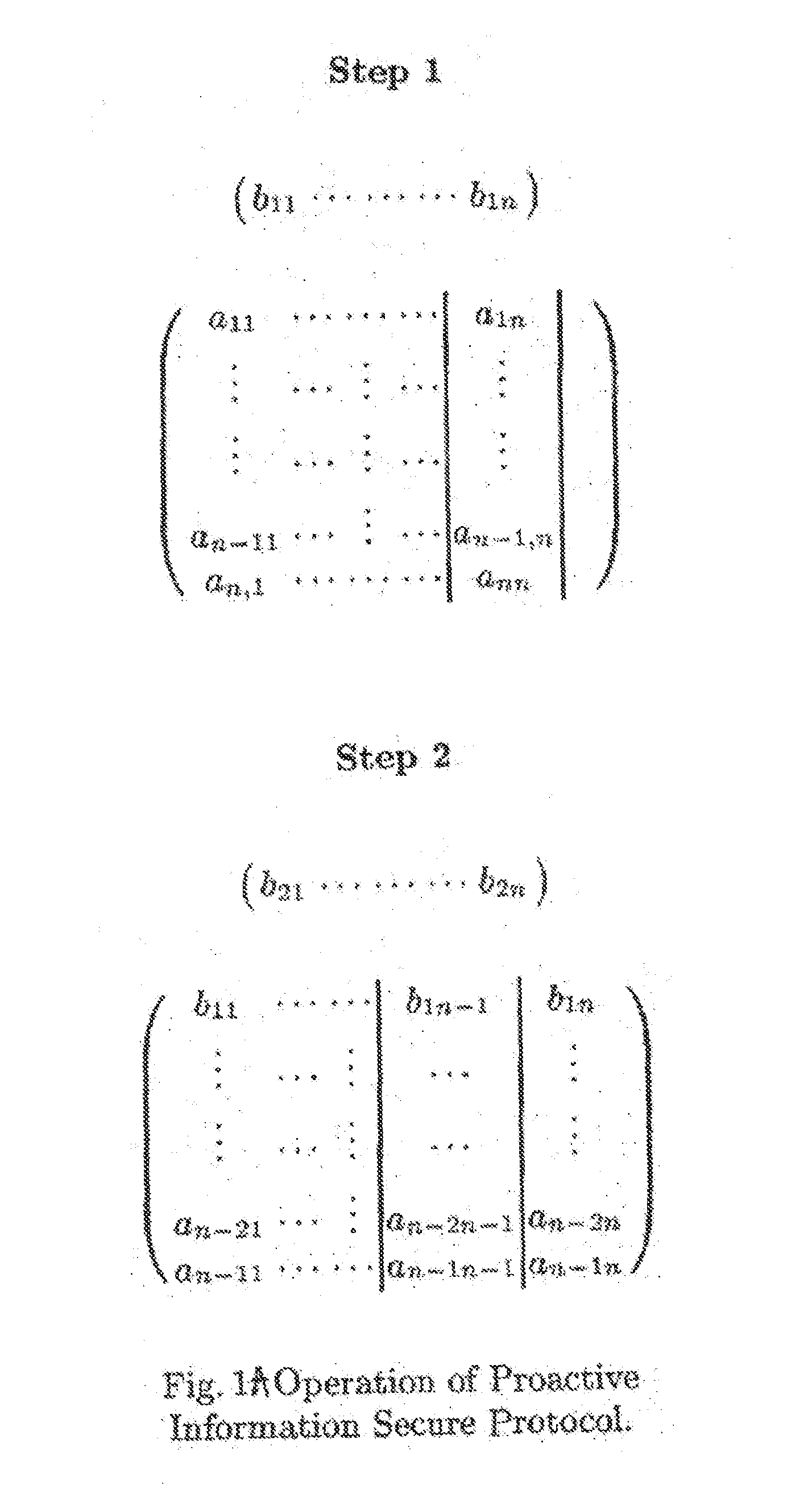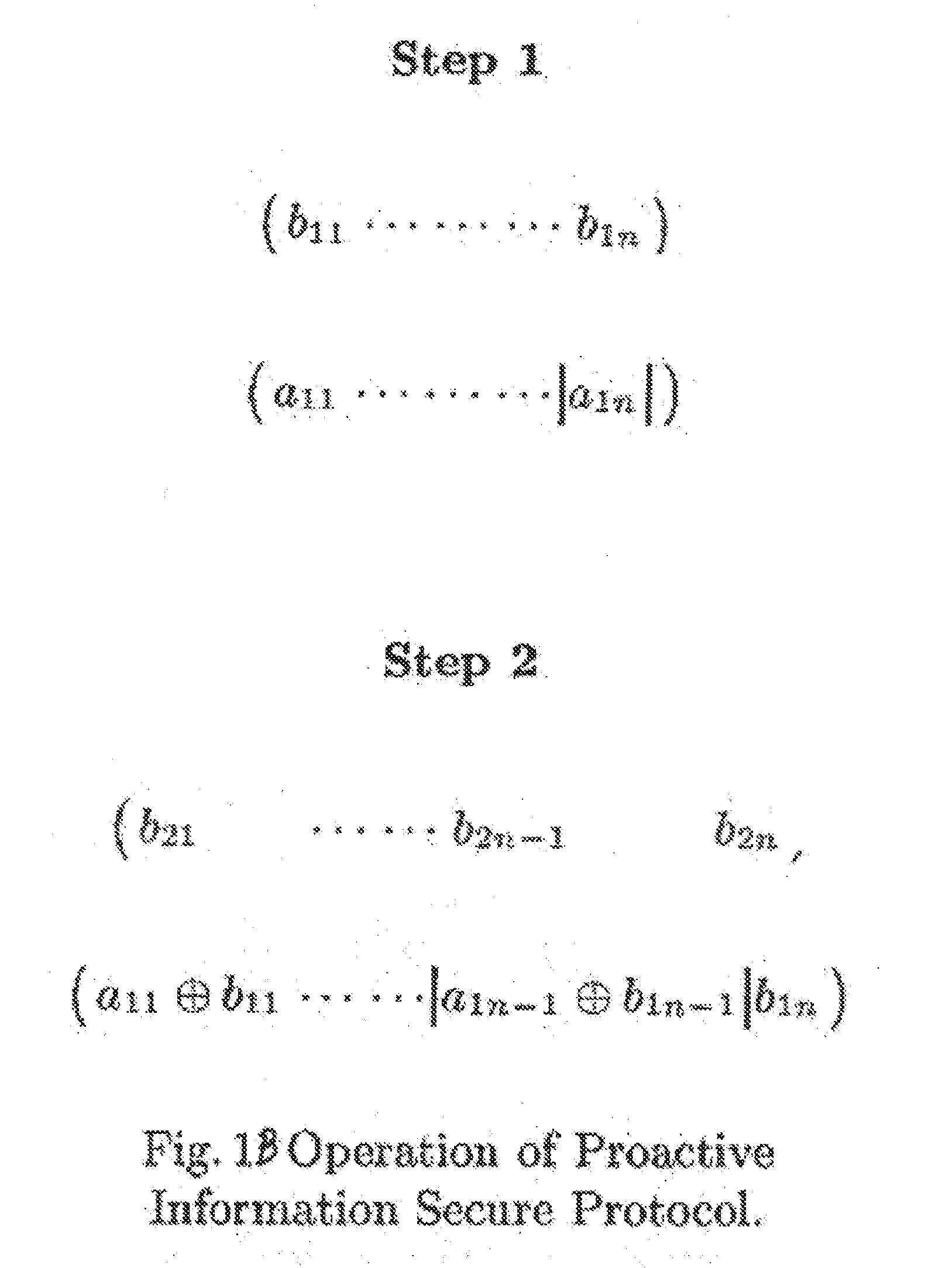Method, apparatus and product for RFID authentication
a technology of rfid authentication and rfid tags, applied in the field of rfid authentication methods, products, and products, can solve the problems of limited rfid reader privacy, no or very limited internal power source, and limited rfid tags that cannot support complicated cryptographic functions, so as to reduce the number of messages and the effect of equal applicability to the method
- Summary
- Abstract
- Description
- Claims
- Application Information
AI Technical Summary
Benefits of technology
Problems solved by technology
Method used
Image
Examples
Embodiment Construction
[0059]The method and apparatus of the present invention will be described hereafter with reference to specific preferred embodiments. Initially described is the specific embodiment employing the basic information secure protocol AP1. The cases or instances in which the adversary does not listen in k>1 sessions of any n successive sessions will be described next. Then the next specific embodiment of the invention employing combined computational secure protocol AP2 will be described, followed by the specific embodiment employing the improved Ã{tilde over (P)}2 protocol resistant against intruder-in the-middle attack.
[0060]The invention provides a method and apparatus for providing security for RFID Tags, and a secure communication between an RFID sender and RFID receiver. The apparatus is generally shown in FIG. 4 in block diagram. The (RFID) sender and the (RFID) receiver are denoted by S and R, respectively, see FIG. 4. The sender and the receiver communicate by sending and receivi...
PUM
 Login to View More
Login to View More Abstract
Description
Claims
Application Information
 Login to View More
Login to View More - R&D
- Intellectual Property
- Life Sciences
- Materials
- Tech Scout
- Unparalleled Data Quality
- Higher Quality Content
- 60% Fewer Hallucinations
Browse by: Latest US Patents, China's latest patents, Technical Efficacy Thesaurus, Application Domain, Technology Topic, Popular Technical Reports.
© 2025 PatSnap. All rights reserved.Legal|Privacy policy|Modern Slavery Act Transparency Statement|Sitemap|About US| Contact US: help@patsnap.com



